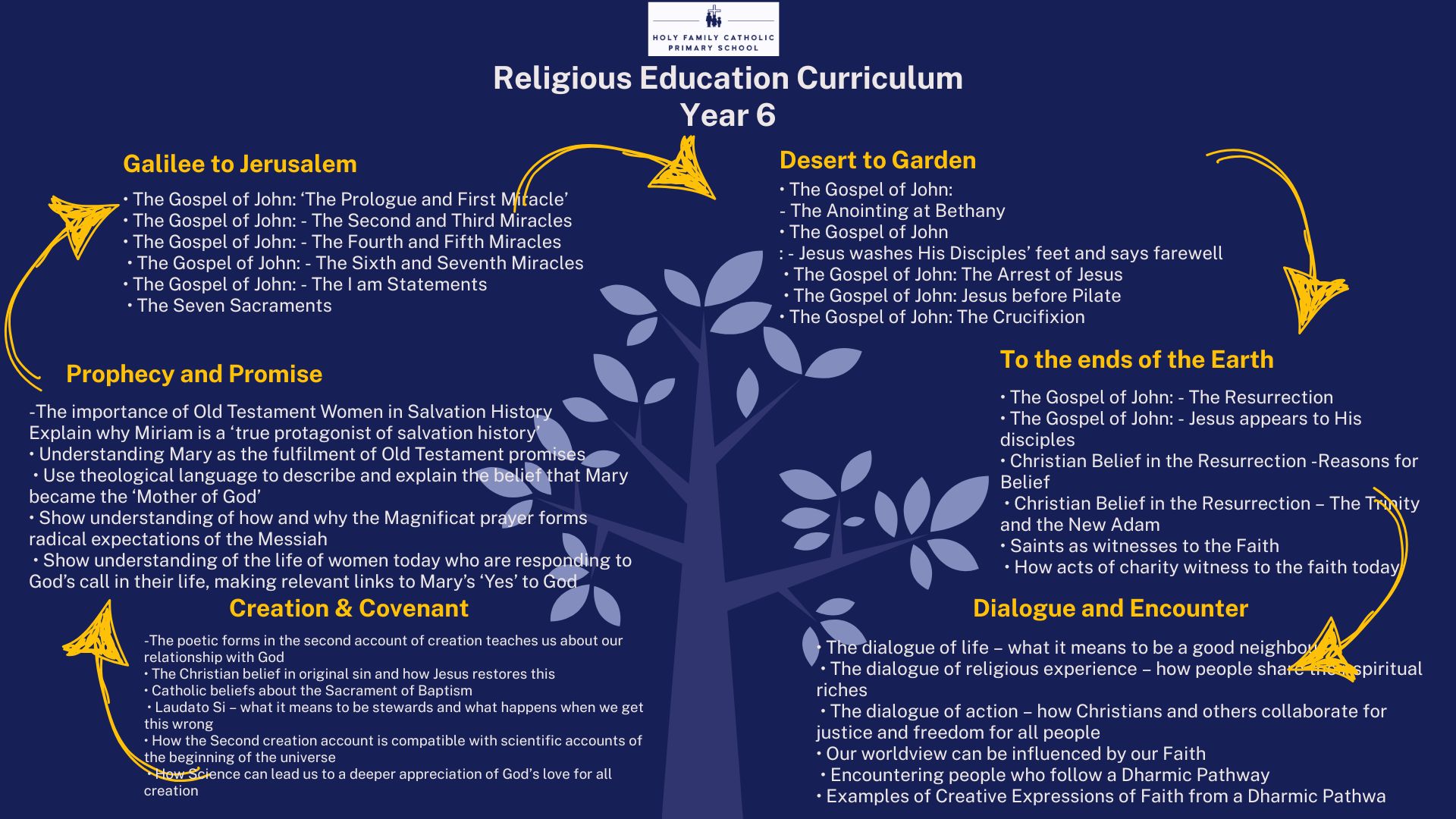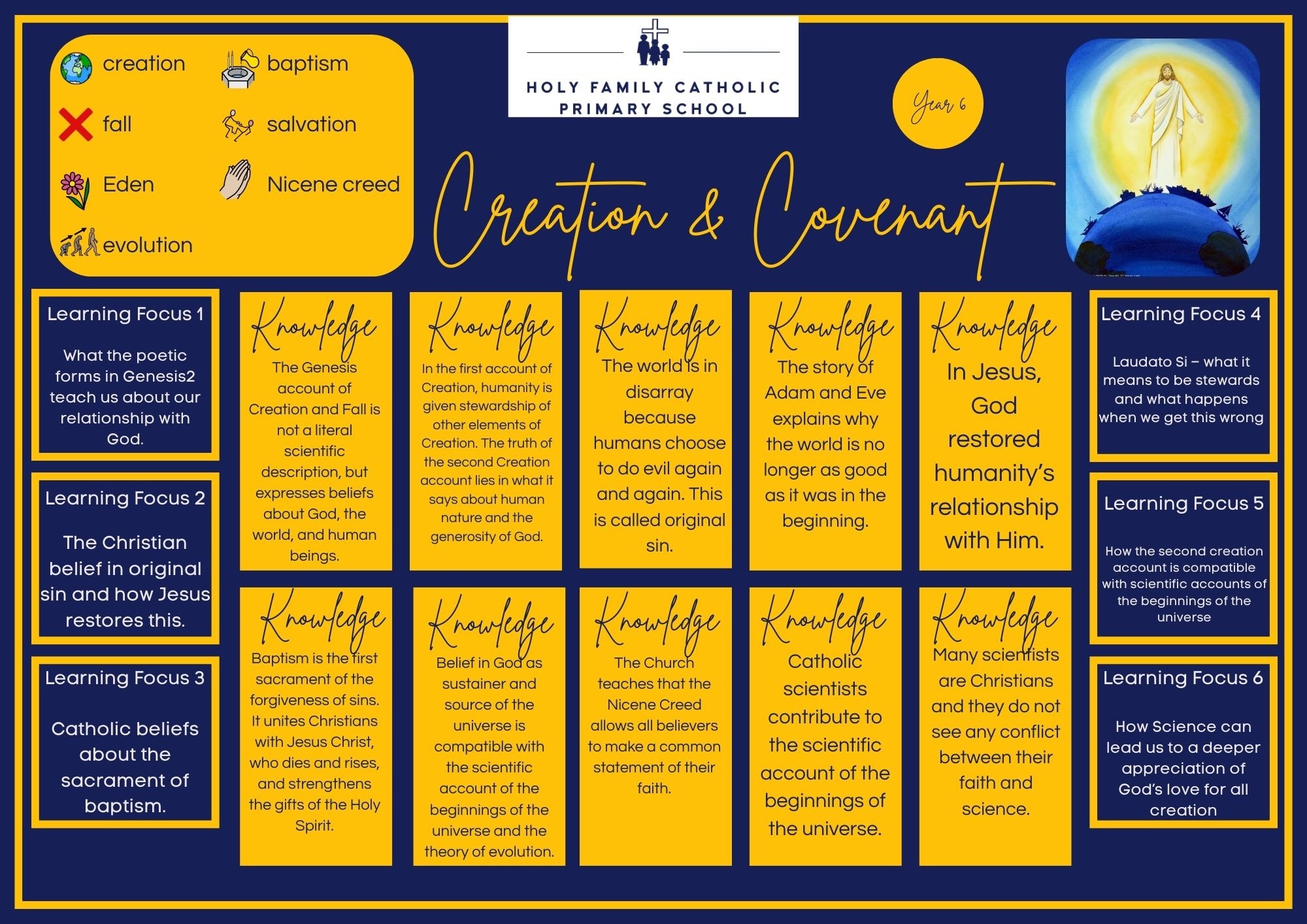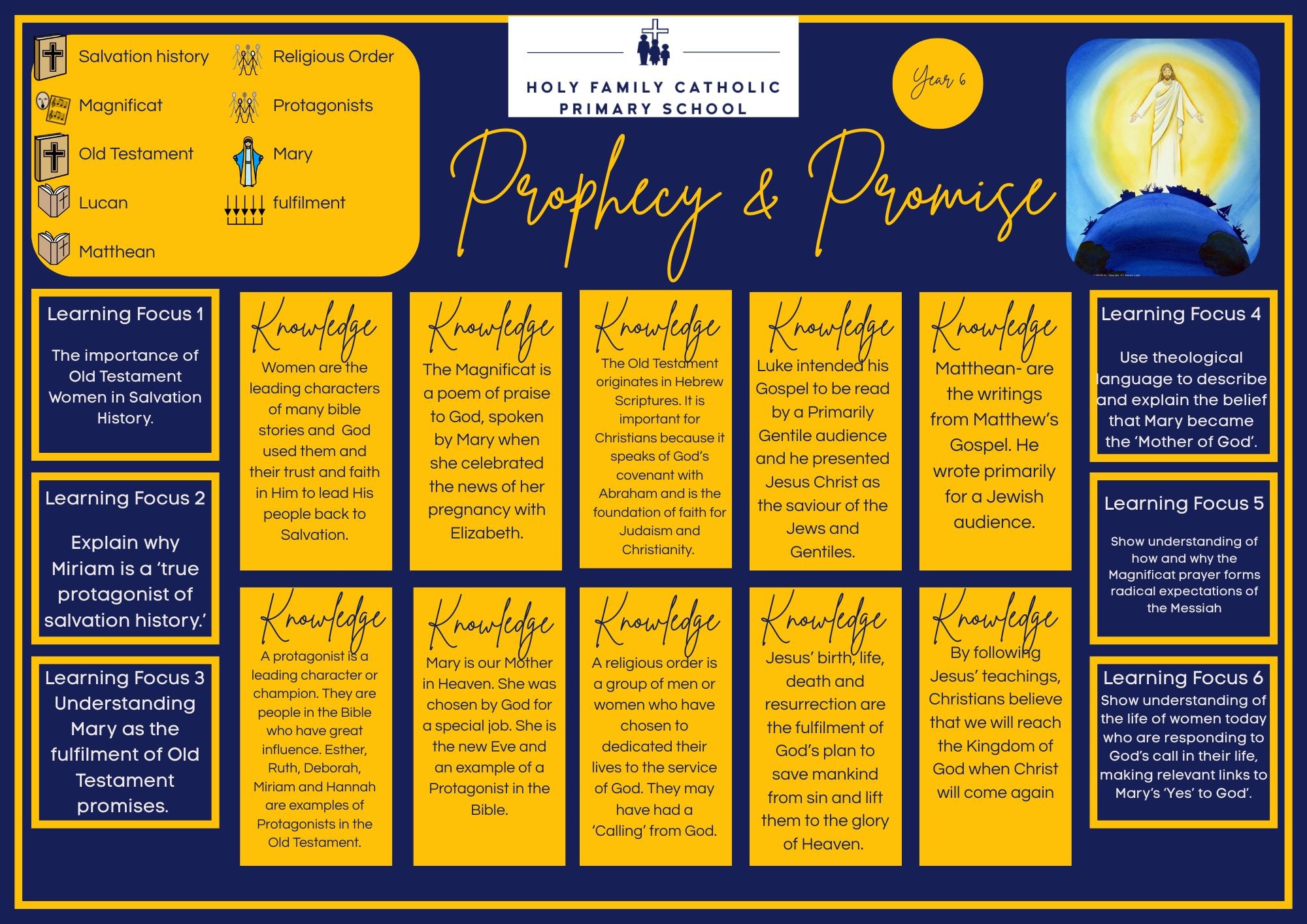Religious Education

In line with our fellow Diocesan schools, we follow the Diocesan lesson plans based on the new RED. This curriculum seeks to present the teaching of religious education in a sequential and progressive form. The framework has four structural elements:
- Knowledge lenses which indicate what should be known by the end of each age phase. These are split into hear, believe, live and celebrate.
- The ‘ways of knowing’ are the skills which develop as the children progress through their curriculum journey. These are split into understand, discern and respond.
- Expected outcomes are set for each age phase and indicate what pupils are expected to know, remember and be able to do.
- Curriculum branches are the way the programme of study presents its model curriculum. There are six half term branches for each half term which are the same in each year group.
The class will focus their gospel study on St John. They will also look at the second account of Creation, understanding what is meant by the ‘Fall’ and be able to make connections with Jesus as the new Adam in St John’s gospel.
Learners will look at women in the Old Testament and see Mary’s place in salvation history as she is presented in the gospel of St John. They will look at St John’s account of Jesus through the seven miraculous signs and they will learn about the seven sacraments of the Catholic Church. They will hear the account of Jesus’ Passion as recounted in St John’s gospel and reflect on this as a source of creative inspiration.
The account of Mary meeting the resurrected Jesus in the garden will connect with the story of Eden and help them understand something of the narrative sequence of salvation history. At the end of the year, they will consider Catholic social teaching as part of the call to dialogue with the culture of the time.

Knowledge Organisers for each branch can be found below



